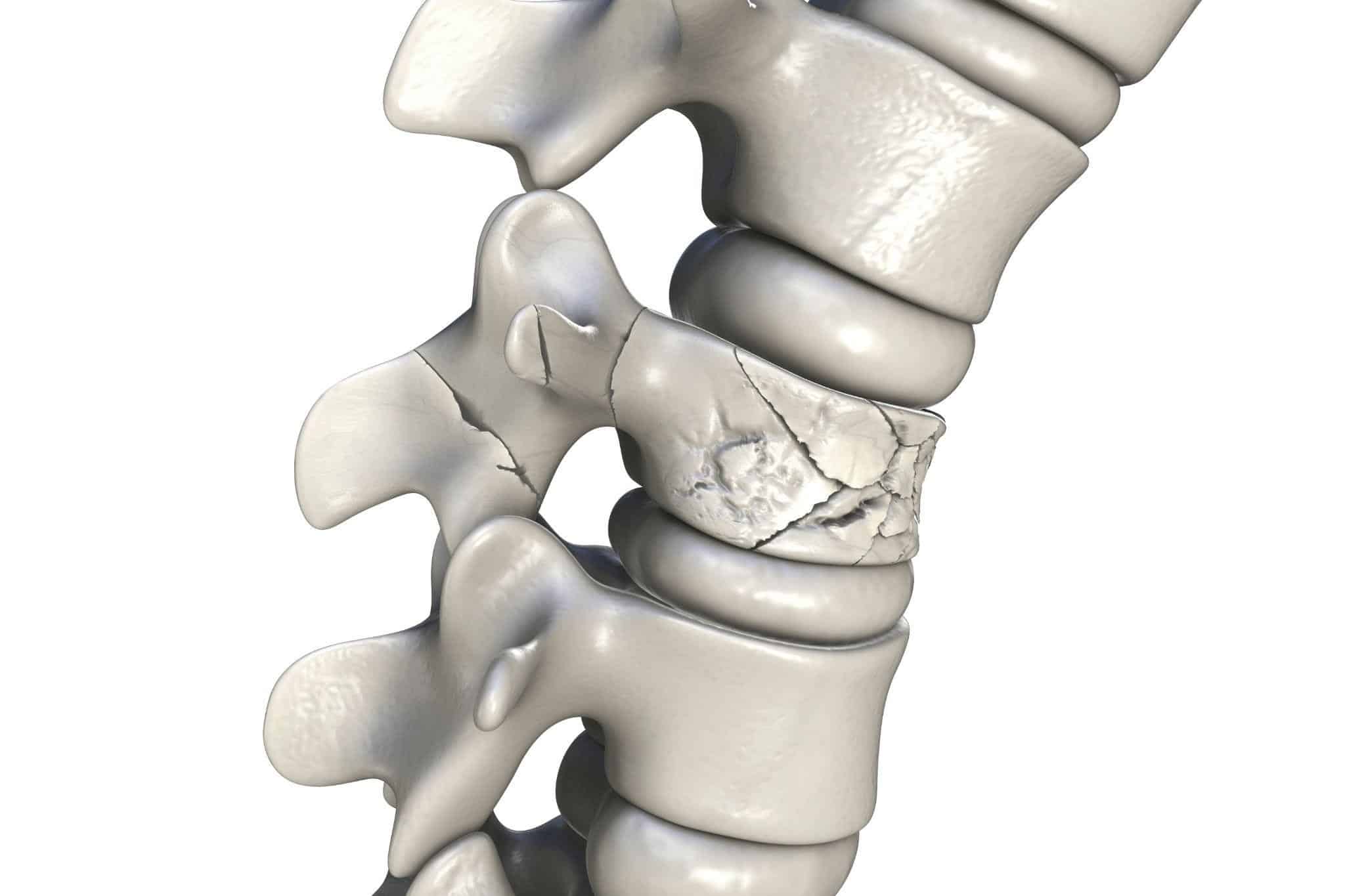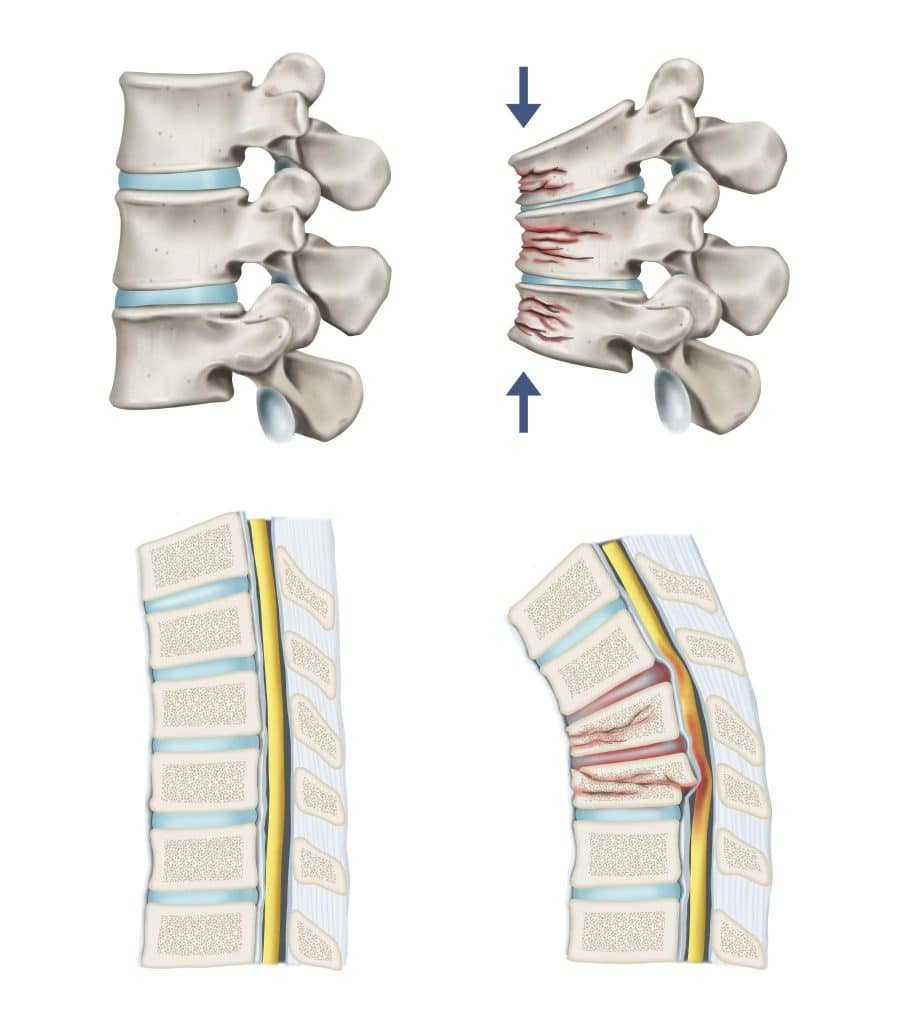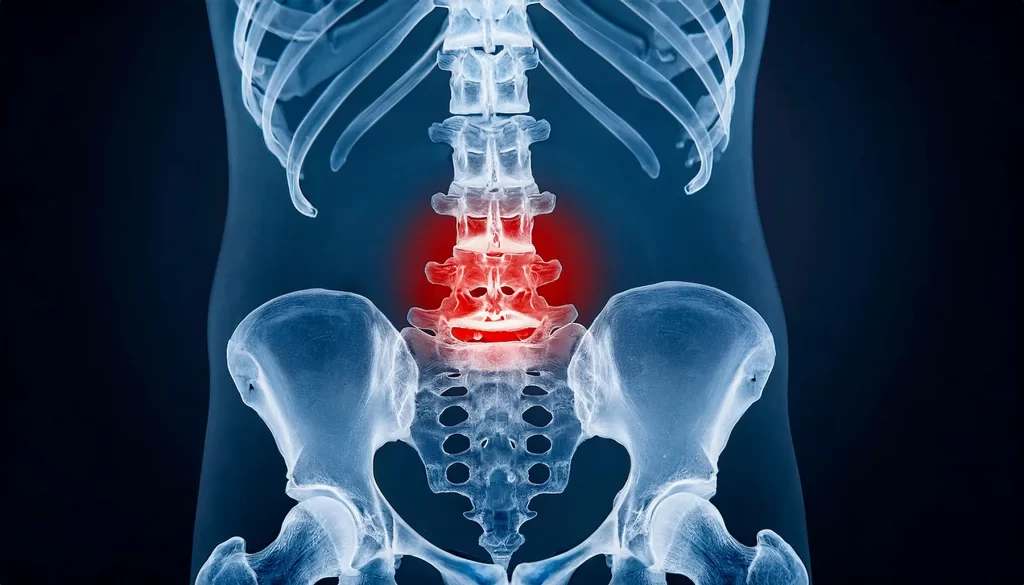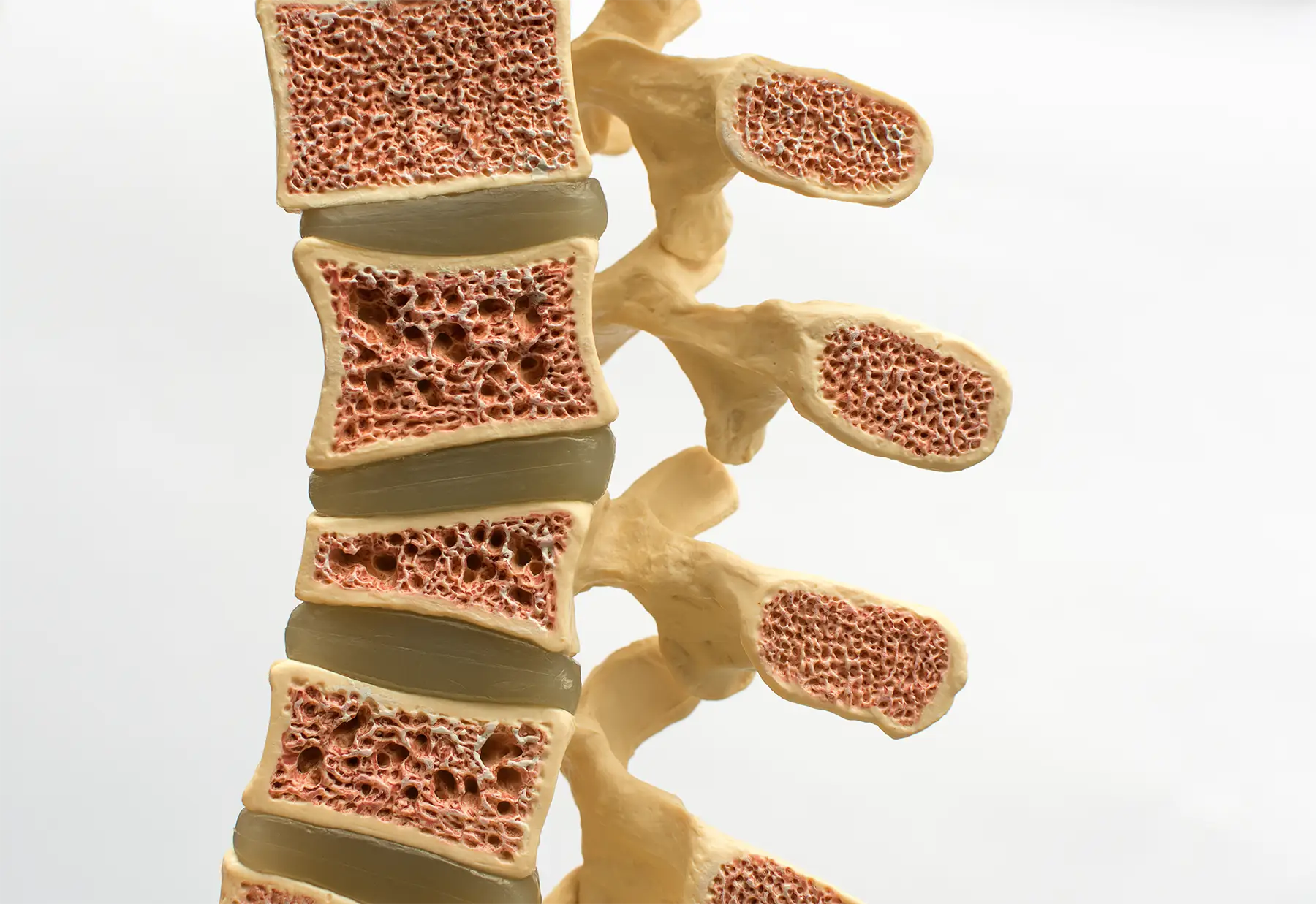
Dr Colum Nolan
Senior Consultant Spine & Neurosurgeon
MB, BCh, BAO, LRCPSI, MRCSI, FRCSI (Neurosurgery)
Spinal fractures are different from an arm or leg fracture. A fractured spine can put pressure on the spinal cord, possibly to the point it tears the spinal cord or compresses the spinal nerve — both of which give rise to pain, discomfort, and loss of mobility and function.
Fractures can occur anywhere in the spine, though it usually occurs in the lower back.

Spinal fractures can be broadly classified into three categories:

A compression fracture is one where the vertebral bone has decreased at least 15% in height, due to fracture. When pressure greater than what the vertebrae can withstand is applied to it, it may shatter the body of the vertebrae, and its shattered fragments will then collapse into the spinal canal. This is called a compression fracture, which is also the most common type of spinal fracture and can occur as a result of osteoporosis.

When the ligaments or spinal discs connecting the vertebrae are stretched or torn, it may lodge the vertebral bones out of alignment, i.e. dislocation. A dislocated vertebra results in a compressed spinal cord and unstable spine. Restabilising the spine would require surgery and/or a back brace.

When a bone is broken, and ligaments are torn simultaneously, we refer to this as a fracture-dislocation. This type of fracture is usually unstable, tends to be very debilitating, and is often surgically repaired.
Most spinal fractures occur due to impact or trauma from vehicle accidents, falls, or sports or as a result of osteoporosis.
Osteoporosis is a condition characterised by natural deterioration of bone density, which results in weak, brittle bones. In severe cases, a slight fall or mild stresses, such as coughing or bending over, can end with a spinal fracture. Most osteoporosis-related fractures affect the spine, wrist, or hip.
In other cases, accidents or traumatic impact can cause injuries to the spine. These injuries range from relatively mild to debilitating, depending on the severity of the injury.

Symptoms of a spinal fracture depend on the location of the fracture and the extent of the damage. Some common signs of a spinal fracture include:
In severe cases, patients may experience a loss of movement in the arms or legs (paralysis).
Spinal fractures as a result of osteoporosis are more commonly found in;


Dr Nolan may order one or a combination of the following tests to confirm the diagnosis:

It is advisable to keep your spine healthy by incorporating regular exercise into your lifestyle. Regular exercise, like walking, swimming, cycling, and weight training, would help strengthen your back muscles. It is also important to maintain a healthy weight, so that there would be less stress on your back. Good posture and good bending and lifting techniques would also go a long way in reducing the risk of spinal stenosis.
Dr Colum Nolan is a Senior Consultant Neurosurgeon with over 20 years of experience, specialising in minimally invasive spine (keyhole) surgery and other spine procedures.
A graduate of the Royal College of Surgeons in Ireland, Dr Nolan underwent neurosurgical training in Ireland and Australia, followed by a fellowship in complex spine surgery at Addenbrooke’s Hospital, Cambridge, as well as rotations at the Orthopaedic Spine Unit in Norfolk and Norwich Hospital.
Dr Colum is committed to delivering compassionate, patient-centred care, combining surgical precision with a genuine dedication to improving his patients’ quality of life.

Our friendly team is here to serve you. For urgent enquiries and appointment requests, please call or WhatsApp us directly.